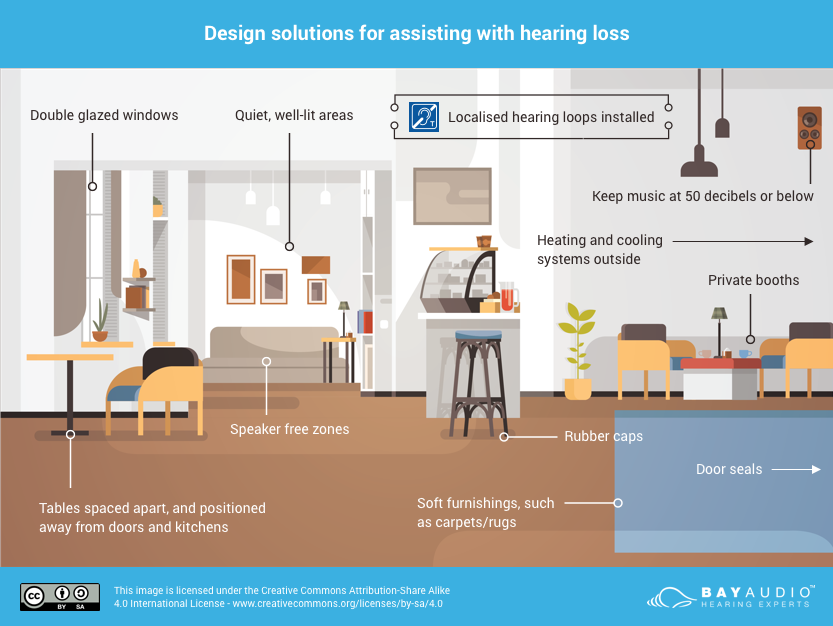Good acoustics and reduced background noise make all the difference to how easily and comfortably you can hear.
When we talk about acoustics, we are talking about the qualities that determine how a room or other enclosed space reflects sound waves. ‘Good acoustics’ means that the space is reflecting sound waves in a way that allows distinct hearing.
Acoustics have a particularly big impact on people with hearing loss and can make it either possible or impossible to hear what is said.
Three in every four respondents in our recent survey, of people that have some level of hearing loss, told us that many venues are far too noisy.
Loud background noise makes it extremely difficult for people to hear and hold a conversation, and 83% of our survey respondents told us that they simply wouldn’t return to a venue they found too noisy.
We have partnered up with Rebecca Vulic, an interior architect with 15 years’ experience to produce this guide which outlines several practical and cost-effective adaptions that can be made to ensure that the enjoyable buzz created by a room full of pleasant conversations doesn’t degenerate into a wall of background noise.

1. Reduce the volume of background music.
Loud music can make it difficult to hold a conversation, and the problem worsens as people raise their voices to be heard. Although the technology has improved immeasurably over the years, not even the most sophisticated hearing aids can cut out unwanted sounds altogether. We recommend music is kept to 50 decibels or below, so that you can hear and be heard.
2. Use furnishings that absorb sound
The furnishings in a room have a significant impact on how sound travels – materials should absorb and not reflect the sound. Acoustic materials include fabric curtains, carpets, floor underlays, tablecloths and rubber caps for table and chairs., for example.
3. Provide good lighting for lipreading
Lipreading is a vital communication skill for many people with hearing loss, particularly in noisier environments. Your room needs to be well-lit so those that rely on lipreading can follow conversation and communicate effectively.
4. Create obstructions
Sound travels through air, if there are obstructions in the space to stop sound travelling, it will reduce noise, e.g. creating rooms within rooms, banquet style seating, private booths etc.
5. Designate a ‘quiet area’
More than half of our respondents to our survey said they are keen for restaurants to provide ‘quiet areas’ that are prioritised for people with hearing loss. Features include:
- Tables spaced apart from one another
- No speaker systems nearby
- Lots of soft furnishings e.g. rubber-capped chair legs
- Tables fitted with localised hearing loop systems
6. Provide hearing loops
People who use hearing aids can benefit significantly from hearing loops in public spaces. Loops transmit sound in the form of a magnetic field that is picked up directly by hearing aids when users switch on their loop setting.
7. Soundproofing
Acoustic quieting can be used to limit unwanted noise, there are several approaches to reducing sound: double glazed windows reduce the level of external noise entering the room, using door seals to reduce noise transmission.



